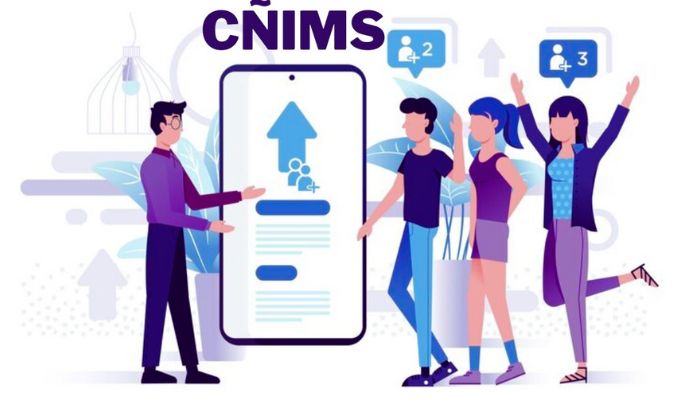In a business landscape marked by relentless competition and regulatory complexities, the quest for streamlined operations is more crucial than ever. This is where Centralized and Integrated Management Systems (Cñims) come into play. Offering a holistic approach to managing multiple facets of business operations, Cñims promise to transform the traditional chaos of management into a coordinated symphony of efficiency and compliance. This article delves deep into what Cñims are, their components, benefits, and how they are revolutionizing industries across the globe.
Understanding Cñims
What is Cñims?
Cñims stands for Centralized and Integrated Management Systems. It’s an overarching framework that merges various management functions—quality control, environmental management, health and safety protocols, and risk management—into a single, cohesive system. By centralizing data and integrating processes, Cñims helps businesses operate more fluidly and maintain compliance with industry standards, thereby enhancing overall transparency and fostering a culture of continuous improvement.
The Evolution of Management Systems
The concept of integrated management isn’t entirely new, but its application has evolved significantly with technological advances and changing business environments. Initially, organizations managed these functions through separate silos, which was often cumbersome and inefficient. The evolution towards integrated systems was driven by the need for better coordination, reduced redundancy, and a unified direction in managing business processes.
Core Components of Cñims
Key Functions Integrated by Cñims
- Quality Management: Ensures products and services meet customer expectations consistently.
- Environmental Management: Helps companies monitor and minimize their ecological footprint, aligning with global standards like ISO 14001.
- Occupational Health and Safety: Focuses on reducing workplace risks in compliance with standards such as ISO 45001.
- Risk Management: Involves identifying, assessing, and mitigating risks to the business.
- Compliance and Regulations: Maintains adherence to legal and regulatory requirements across jurisdictions.
Technology in Cñims
Modern Cñims are heavily supported by advanced technologies such as AI and cloud computing. These technologies facilitate real-time data gathering, analytics, and decision-making support, making Cñims not just a managerial tool but a strategic asset.
Benefits of Implementing Cñims
Operational Excellence
Cñims streamline operations by automating routine tasks and integrating data across departments. This not only boosts efficiency but also reduces the chances of errors and delays, leading to significant cost savings and improved productivity.
Compliance and Risk Management
With integrated systems, businesses can better manage compliance with various standards and regulations. Cñims provide a framework for ongoing compliance monitoring and make it easier to adapt to changes in legal requirements.
Enhanced Decision-Making
By providing a centralized view of data and metrics, Cñims support more informed decision-making throughout the organization. This is particularly valuable in complex environments where leaders must make quick, yet accurate, decisions.
Practical Applications and Case Studies
Industry-Specific Applications
- Manufacturing: Streamlines production processes, enhances quality control, and ensures safety compliance.
- Healthcare: Manages patient data, controls infection risks, and maintains service quality.
- Construction: Oversees project management, safety protocols, and environmental impact.
- Energy: Monitors compliance with safety and environmental regulations, crucial in high-risk sectors.
Case Study Highlight
A multinational manufacturing company implemented a Cñims to centralize its quality, safety, and environmental management processes. The results were impressive: a 30% reduction in compliance incidents and a 25% decrease in operational costs within the first year.
Challenges and Solutions
Common Implementation Challenges
- Resistance to Change: Employees may be hesitant to adopt new systems. This can be mitigated by effective change management strategies and training.
- Data Integration Issues: Consolidating data from different sources can be challenging. Employing data standardization techniques before integration can ease this process.
- High Initial Costs: Though Cñims require upfront investment, the long-term savings and gains justify the expenditure.
Strategies for Overcoming Challenges
- Employee Training: Essential for ensuring smooth adoption and utilization of Cñims.
- Gradual Integration: Implementing the system in phases can reduce disruption and help staff adjust more easily.
- Hiring Experts: Specialists in system integration and data management can provide necessary guidance and expertise.
The Future of Cñims
As businesses continue to navigate a dynamic global landscape, the role of Cñims is set to grow. Innovations in AI and machine learning will further enhance the predictive capabilities of Cñims, making them not just tools for management but also for foresight and strategic planning.
Conclusion
Cñims represent a significant leap forward in how businesses manage their operations. By integrating critical management functions into a unified system, companies can achieve higher efficiency, better compliance, and more informed decision-making. As we look towards the future, the role of Cñims in business success is undeniable, providing a strategic advantage in an increasingly complex world.
For any business aiming to streamline its operations and ensure robust compliance, adopting a Cñims could well be the key to future success.
FAQs
- What is the primary purpose of Cñims?
- To integrate and centralize various management processes, enhancing efficiency and compliance.
- How can Cñims improve regulatory compliance?
- By automating compliance tracking and reporting, reducing the risk of penalties.
- What industries benefit most from Cñims?
- Industries like manufacturing, healthcare, construction, and energy, where compliance and risk management are crucial.
- What challenges can arise during Cñims implementation?
- Issues such as employee resistance, data integration difficulties, and the initial cost of implementation.
- How can technology enhance Cñims?
- Through cloud computing for flexibility and AI for predictive analytics, enhancing decision-making capabilities.

